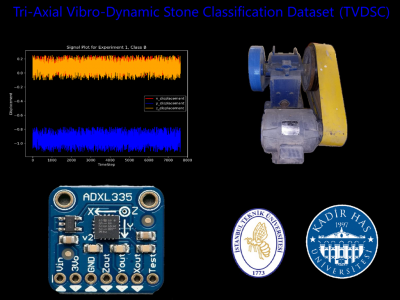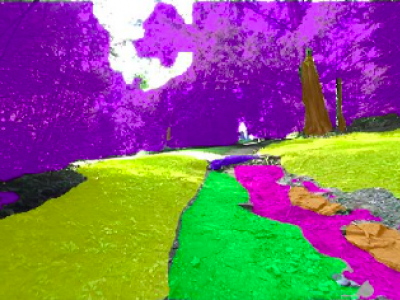Machine Learning

This is part of our external validation set, which contains 40 volunteers and about 80 hematological examination items. Among them, Cl, BHB, AG, RBP, HCO3, FT3, aTPO, CYSC, FT4, Folate, UA and aTG contribute more to the prediction. Because the data involves personal privacy and research confidentiality, it cannot be fully public. However, you can still make predictions by using our ML model and get a high accuracy on the external dataset.
- Categories:
 134 Views
134 Views
The raw data from Artsy (from https://www.artsy.net/ ) were collected using the original Python scraping program. Artsy labeled the categories as follows: "Painting", "Work on Paper", "Sculpture", "Print", "Photography", and "Textile Arts". These categories were predicted by other explanatory variables. The rationale behind the selection of this task is the price levels differ greatly across the various categories.
- Categories:
 37 Views
37 Views
Two thousand MTJ samples in total were included in the dataset for analysis; First, shuffle the dataset randomly to eliminate bias, then split it into ten equal folds of 200 samples each. For each iteration of cross-validation, use nine folds for training and one for testing, rotating the test fold across all ten groups so that every sample is tested once.
- Categories:
 39 Views
39 ViewsThis dataset contains LoRa physical layer signals collected from 60 LoRa devices and six SDRs (PLUTO-SDR, USRP B200 mini, USRP B210, USRP N210, RTL-SDR). It is intended for use by researchers in the development of a federated RFFI system, whereby the signals collected from different receivers and locations can be employed for evaluation purposes.
More details can be found at https://github.com/gxhen/federatedRFFI
- Categories:
 950 Views
950 Views
This study presents a English-Luganda parallel corpus comprising over 2,000 sentence pairs, focused on financial decision-making and products. The dataset draws from diverse sources, including social media platforms (TikTok comments and Twitter posts from authoritative accounts like Bank of Uganda and Capital Markets Uganda), as well as fintech blogs (Chipper Cash and Xeno). The corpus covers a range of financial topics, including bonds, loans, and unit trust funds, providing a comprehensive resource for financial language processing in both English and Luganda.
- Categories:
 363 Views
363 Views
Two-year price movements from 01/01/2014 to 01/01/2016 of 88 stocks are selected to target, coming from all the 8 stocks in the Conglomerates sector and the top 10 stocks in capital size in each of the other 8 sectors. The full list of 88 stocks and their companies selected from 9 sectors is available in StockTable, a facsimile of the paper appendix appendix_table_of_target_stocks.pdf.
- Categories:
 197 Views
197 Views
The softwarization and virtualization of the fifth-generation (5G) cellular networks bring about increased flexibility and faster deployment of new services. However, these advancements also introduce new vulnerabilities and unprecedented attack surfaces. The cloud-native nature of 5G networks mandates detecting and protecting against threats and intrusions in the cloud systems.
- Categories:
 345 Views
345 Views
It is a dataset containing sentence segments from cutomer reviews about mobile phone from different sources like Amazon, Flipkart, Tweeter and some existing datasets. It contains more than 1000 records tagged with one of the five aspect categories battery, camera, display, price and processor. Whether a sentence segment has sentiment expression (subjective/ objective) is also tagged and the sentiment orientation (positive/ negative/ neutral) of each sentence segment is assigned. Explicit or implicit presence of aspect is also maintained.
- Categories:
 240 Views
240 ViewsThis work presents a specialized dataset designed to advance autonomous navigation in hiking trail and off-road natural environments. The dataset comprises over 1,250 images (640x360 pixels) captured using a camera mounted on a tele-operated robot on hiking trails. Images are manually labeled into eight terrain classes: grass, rock, trail, root, structure, tree trunk, vegetation, and rough trail. The dataset is provided in its original form without augmentations or resizing, allowing end-users flexibility in preprocessing.
- Categories:
 600 Views
600 Views

